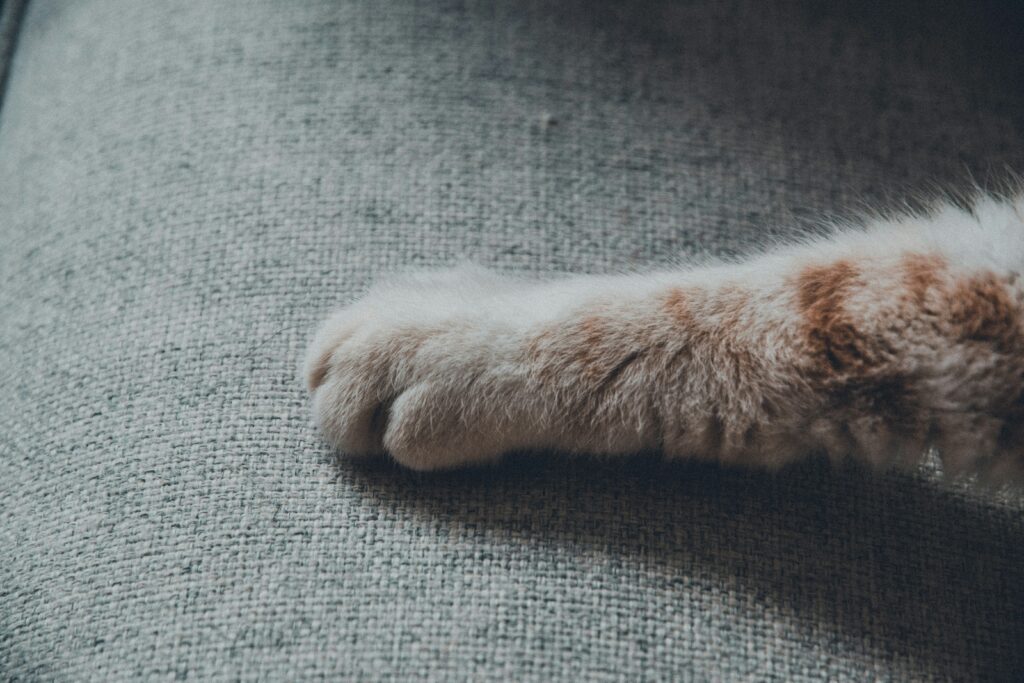
Keeping your cat’s nails trimmed is essential for their well-being. Untrimmed nails can cause discomfort, damage furniture, and even lead to health issues such as ingrown claws or infections. Regular grooming helps your cat stay comfortable while also protecting your home from scratches. Additionally, overgrown nails can lead to mobility issues, making it harder for your cat to walk or climb.
How Often Should You Trim Your Cat’s Nails?
The ideal frequency for trimming your cat’s nails is every two to four weeks. However, this can vary depending on:
Activity level: Indoor cats may need more frequent trims than outdoor cats since they do not naturally wear down their nails.
Age: Older cats’ nails tend to grow thicker and longer, requiring more attention.
Health conditions: Some cats have nail disorders or medical issues that necessitate more frequent trims.
Breed Differences: Some cat breeds, like Persians, have faster-growing nails and may require trims more often.
Signs That Your Cat's Nails Need Trimming
It is essential to recognize the signs that indicate your cat’s nails are too long:
Clicking sounds on hard floors when they walk.
Snagging on furniture, carpets, or clothing.
Curved or overgrown nails pressing into their paw pads.
Scratching behaviors increasing due to discomfort.
Reluctance to climb or jump, as longer nails may make movement uncomfortable.
If you notice any of these signs, it’s time for a trim!

How to Trim Your Cat’s Nails Safely
Trimming your cat’s nails may seem daunting, but following these steps can make the process easier:
1. Gather the Right Tools
Use a cat-specific nail trimmer such as guillotine-style clippers or scissor-type trimmers. Avoid human nail clippers as they can crush rather than cut a cat’s claw cleanly. A nail file can also be helpful for smoothing out rough edges after trimming.
2. Choose a Comfortable Environment
Select a quiet, stress-free space where your cat feels at ease. Having treats nearby can help reward good behavior. Some cats feel more secure when placed on a soft blanket or towel.
3. Handle Your Cat’s Paws Gently
Before trimming, get your cat used to having their paws touched. Press gently on their toes to extend the claws. This step is especially important for kittens, as early exposure helps them become more tolerant of nail trims in adulthood.
4. Trim Carefully
Only trim the sharp tip to avoid cutting into the quick (the pink area inside the claw that contains nerves and blood vessels).
If unsure, trim small amounts at a time.
If you accidentally cut the quick, use styptic powder to stop any bleeding.
If your cat has dark nails and the quick isn’t visible, be extra cautious and trim in small increments.
5. Reward Your Cat
After trimming, reward your cat with a treat or play session. This helps create a positive association with nail trims. Cats who receive positive reinforcement are more likely to tolerate future grooming sessions.
What to Do If Your Cat Resists Nail Trimming
If your cat dislikes having their nails trimmed, try these solutions:
Use a scratching post: Regular scratching on appropriate surfaces helps naturally wear down nails.
Try a different position: Some cats prefer being wrapped in a towel (a “cat burrito”) to feel secure.
Take breaks: If your cat becomes restless, trim a few nails at a time over several days.
Use calming aids: Pheromone sprays or cat-friendly CBD products may help reduce stress.
Seek professional help: If nail trimming is too difficult, consider visiting a groomer or veterinarian.

Common Myths About Cat Nail Trimming
Myth 1: Cats Don’t Need Nail Trimming
While outdoor cats may wear down their nails naturally, indoor cats still require regular trims to prevent overgrowth and injury. Even outdoor cats may benefit from occasional trims to prevent splitting or breakage.
Myth 2: Cutting Too Short Will Always Hurt the Cat
As long as you avoid the quick, trimming does not cause pain. Only cutting into the pink quick area will lead to discomfort and bleeding.
Myth 3: Declawing Is a Good Alternative
Declawing is a painful and inhumane procedure that removes part of a cat’s toes. It can lead to behavioral and physical complications. Many countries have banned the procedure due to its cruelty.
Myth 4: Cats Will Automatically File Their Nails Down
While scratching posts help, they do not entirely replace the need for manual trimming. Cats with mobility issues or certain health conditions may not scratch enough to keep their nails in check.

Frequently Asked Questions (FAQs)
How Do I Know If I Trimmed Too Much?
If your cat’s nail starts bleeding, you may have cut into the quick. Apply styptic powder or cornstarch to stop the bleeding.
What Age Should I Start Trimming My Cat’s Nails?
Start as early as 8-10 weeks old to get kittens accustomed to the process. Use gentle handling and positive reinforcement.
Can I Use Human Nail Clippers?
It is not recommended as they can cause splintering. Cat-specific clippers provide a cleaner and safer cut.
Conclusion
Regular nail trimming is a vital part of feline care, helping to prevent discomfort, injuries, and destructive scratching. Most cats need a trim every two to four weeks, but observing their nails and behavior will help you determine the best schedule. With patience and the right tools, you can keep your cat’s claws well-maintained while ensuring their comfort and health.
References
How Often To Trim Cat Nails: A Vet Explains – https://cats.com/how-often-to-trim-cat-nails?
How To Trim Cat Nails: A Guide To Trimming Cat Claws – https://www.petmd.com/cat/general-health/how-to-trim-cat-nails?
Cat Nail Trimming 101 – https://www.wihumane.org/behavior/ask-the-experts/cat-behavior/cat-nail-trimming-101
Share this:
- Click to share on WhatsApp (Opens in new window) WhatsApp
- Click to share on Facebook (Opens in new window) Facebook
- Click to share on LinkedIn (Opens in new window) LinkedIn
- Click to share on Pinterest (Opens in new window) Pinterest
- Click to share on Tumblr (Opens in new window) Tumblr
- Click to share on X (Opens in new window) X
- Click to share on Reddit (Opens in new window) Reddit
- Click to share on Telegram (Opens in new window) Telegram
- Click to email a link to a friend (Opens in new window) Email
- Click to print (Opens in new window) Print































